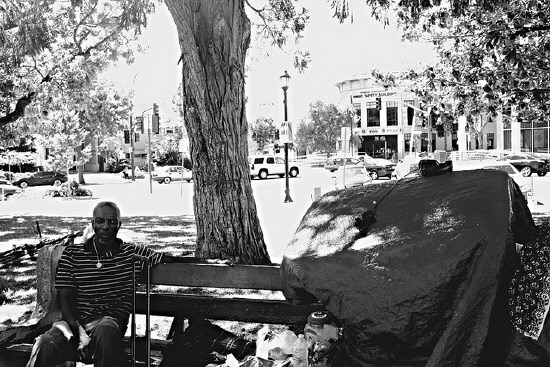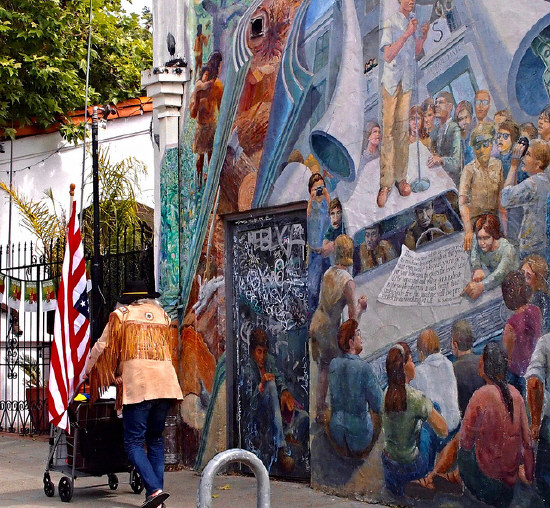Berkeley: The Homeless Mind
by Steed Dropout
Jul 10, 2016

Photo by Ted Friedman
Solutions to Bay Area homelessness rolled off the presses like EXTRAS, recently, as major media ganged up on homelessness.
Even as demands for homeless services explode, San Francisco, reportedly, was giving its all to take a bite out of the crisis.
Huddled between Oakland and Albany, tiny-land-mass Berkeley, with its frazzled homeless communities on the Southside and near the freeway, seems to have accepted homelessness as a life-style—for someone else.
Here, we offer our own media observations from the front lines of Berkeley homelessness in and around Berkeley’s Peoples Park.
Southside homeless folks are mostly mentally ill, or tramps, various bums, and drug addicts. Our addicts and crazies are mostly good folks who just want to persist with their life-styles.
All but a persistent core who “come for the culture, and stay for the food,” to quote Berkeley’s tourist advise, are passing through on a national migration of hopelessness not seen since the 1930s depression.
That style is based on personal freedom, refusal of services (except for free meals in the park and local churches), a bed roll, maybe a girlfriend and/or a laid-back pit-bull.
Berkeley’s Peoples (sic.) Park is a homeless convention center, its surrounding streets campgrounds for vangabonds. Vangabonds live in vans, busses, trucks, and the occasional high-end motorhome bought on the cheap.
An ambiguous statement, recently, by U.C. Berkeley—owner of the park—seemed to offer Peoples Park as a potential site for a homeless hotel. The ensuing misunderstanding pitted Peoples Park activists against the peoples it now serves.
Park activists, like founder Mike Delacour, 77, stormed city council and, Delecour told me, “nipped that idea in the bud.”
Among the homeless who seek housing, few succeed. Papa John and his wife, Mona used an attorney to pressure the Oakland Housing authority for an apartment. Their success is rare.
A familiar figure in the park was recently housed in Oakland, but when that housing was vermin-ridden and exposed to violence, the man cut his throat. He has recovered, reportedly, and found suitable housing.
Urban Strider, a one-man outreach to the poor and troubled on Berkeley’s streets, spent three years getting one homeless youth housed—an all but impossible achievement.
Federal subsidized Berkeley housing has been unavailable for decades and most needy recipients with housing vouchers from a local agency of last resort are not accepted by landlords. Years of ravishing homelessness have rendered many needy apartment seekers unappealing to prospective landlords.
Berkeley’s empty lots have been snapped up by developers. So-called affordable apartments, a small percentage of required units in new buildings, are not affordable to the working poor or to those homeless with social security checks.
The hopelessness of Berkeley homelessness is catching.
Homeless Berkeley Street Photography Gallery:

Photo by Ted Friedman

Photo by Ted Friedman

Photo by Ted Friedman

Photo by Ted Friedman

Photo by Ted Friedman

Photo by Ted Friedman

Photo by Ted Friedman

Photo by Ted Friedman

Photo by Ted Friedman
More Telegraph Ave. Homeless Street Photography: https://www.flickr.com/photos/berkboy/
